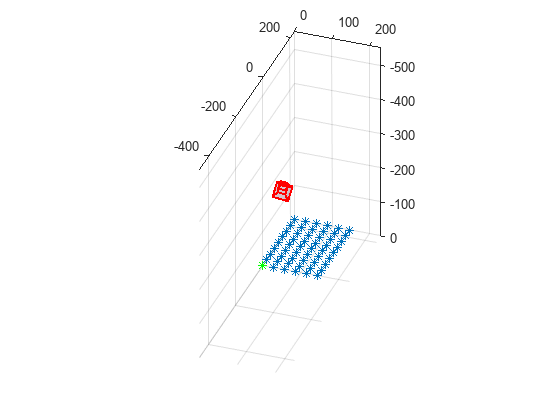plotCamera
Plot camera in 3-D coordinates
Description
cam = plotCameracam, a Camera object that contains
the properties of the plotted camera.
cam = plotCamera(cameraTable)cameraTable.
cam = plotCamera(Name=Value)Opacity=0.4 sets the opacity of the plotted camera to
0.4.
The name-value pair arguments set the associated properties of the plotted camera visualization object.







